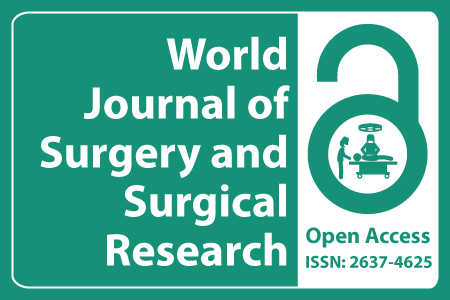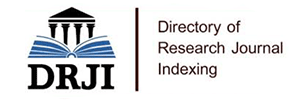
Journal Basic Info
- Impact Factor: 1.989**
- H-Index: 6
- ISSN: 2637-4625
- DOI: 10.25107/2637-4625
Major Scope
- Vascular Surgery
- Trauma Surgery
- Ophthalmology
- Robotic Surgery
- Endocrine Surgery
- Aesthetic & Cosmetic Surgery
- Hepatology
- Plastic Surgery
Abstract
Citation: World J Surg Surg Res. 2023;6(1):1449.DOI: 10.25107/2637-4625.1449
Effect of Holmium Laser Enucleation of the Prostate on Prostate-Specific Antigen Kinetics in Patients with Known Prostate Cancer on Active Surveillance
Ibrahim A, Zakaria AS, Nguyen DD, Diab C, Tanguay S, Aubé-Peterkin M, Carrier S and Aprikian AG
Division of Urology, McGill University Health Center (MUHC), McGill University, Canada
Northern Ontario School of Medicine, Thunder Bay Regional Health Centre, Canada
*Correspondance to: Ahmed Ibrahim
PDF Full Text Research Article | Open Access
Abstract:
Objectives: To evaluate the effect of Holmium Laser Enucleation of the Prostate (HoLEP) on Prostate-Specific Antigen (PSA) kinetics in men with preoperatively known Prostate Cancer (PCa) on Active Surveillance (AS).
Methods: We retrospectively reviewed a prospectively maintained database of patients undergoing HoLEP for the management of lower urinary tract symptoms secondary to Benign Prostatic Hyperplasia (BPH) at a single institution. Patients on AS for PCa undergoing HoLEP were compared to all other patients without a diagnosis of PCa with regards to postoperative PSA kinetics, complications, and functional outcomes. A group of AS patients who underwent monopolar Transurethral Resection of the Prostate (TURP) was also compared to our study cohort. Univariate and multivariate analyses were performed using linear regression models.
Results: Of the 1,445 HoLEP cases, 124 (8.6%) patients were identified to have PCa and 25 (2%) were managed under AS. Median age at the time of surgery was 72.5 (69 to 79) years and with a baseline prostate volume of 64.5 mL. After a follow-up of 7.3 years, the absolute median decline in the first PSA measurement post-HoLEP was 4.7 ng/ml with a relative decrease of 47.4%. The median lowest PSA reached post-HoLEP was 1.1 ng/ml within the first year after HoLEP. During follow-up, there were no significant differences in PSA values between the study cohort and the BPH group who underwent HoLEP (p<0.05). PSA variation remained low in AS patients during the duration of the post-HoLEP follow-up (0.4 ng/ml). On univariate analysis, higher baseline primary Gleason score and a lower percentage of cancer in HoLEP specimen were found to significantly increase relative PSA changes post-operatively (P=0.004 and 0.022, respectively). Additionally, most AS patients who underwent HoLEP were found to have lower postoperative PSA values and when compared to AS patients in the TURP group (1.1 ng/ml vs. 3.2 ng/ml, p=0.019). Functional outcomes and complications of patients undergoing HoLEP were similar in both the PCa on AS and non-PCa cohorts.
Conclusion: Patients with PCa under AS experience a significant decline in PSA after HoLEP. There is low PSA variation during follow-up, suggesting that cancerous cells in low-grade PCa contribute little to overall serum PSA levels. HoLEP is a safe and effective procedure for low-grade PCa patients on AS with bothersome LUTS secondary to BPH.
Keywords:
Prostate cancer; Holmium laser; HoLEP; Active surveillance
Cite the Article:
Ibrahim A, Zakaria AS, Nguyen DD, Diab C, Tanguay S, Aubé-Peterkin M, et al. Effect of Holmium Laser Enucleation of the Prostate on Prostate-Specific Antigen Kinetics in Patients with Known Prostate Cancer on Active Surveillance. World J Surg Surgical Res. 2023; 6: 1449..













